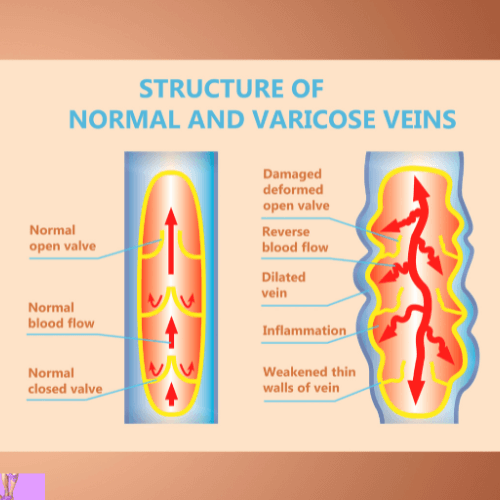Varicose veins are enlarged, twisted veins that often appear near the skin’s surface, usually in the legs. They result from weakened vein walls and faulty valves that cause blood to pool instead of flowing toward the heart. While often a cosmetic concern, they can also cause discomfort and pain.

